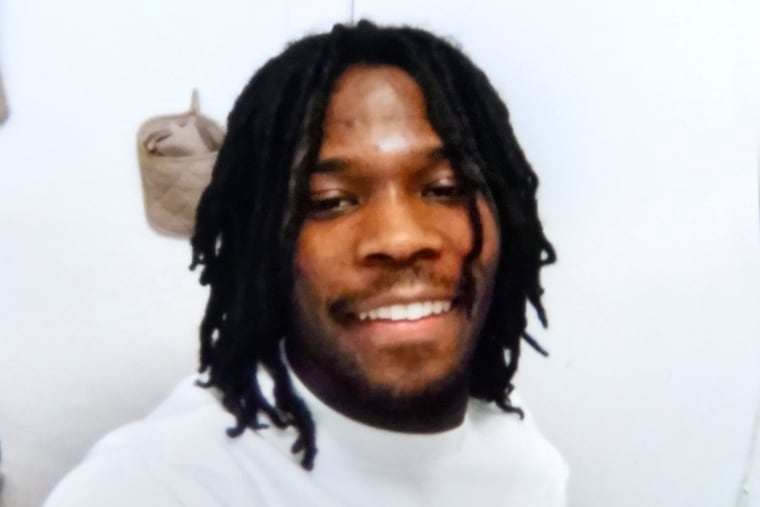Philadelphia police, again, incapable of treating Black men as anything but a threat | Helen Ubiñas
People forget that police officers seem to figure out ways to deescalate situations when the person holding a knife or a gun, or this summer, bats and pipes in Fishtown, is white.

In May, George Floyd died calling out for his mother while a Minneapolis police officer pressed his knee against his neck until he took his last breath.
On Monday, Walter Wallace Jr.'s mother begged Philadelphia police not to shoot her son, armed with a knife but struggling with mental health issues, the family said. His mother called for help. Instead, she helplessly watched her 27-year-old son crumple to the ground when eyewitnesses said two police officers fired at least 10 shots in front of her and stunned West Philadelphia residents. These are the very same people who have yet to recover from the trauma of this spring’s protests, who have experienced police brutality for generations.
Like the Floyd execution before, Wallace’s killing, captured on cell phone video, spurred protests from an angry and traumatized community tired of watching Black and brown men and women killed by police.
In a statement, Mayor Jim Kenney said: “I have watched the video of this tragic incident and it presents difficult questions that must be answered.”
Let’s start here: Why is a Black man in crisis, at least 10 feet from cops pointing guns at him, considered a threat, while a white teen who just killed two people at a protest (honoring another Black man shot and paralyzed by police) is able to walk past cops with his rifle strapped in front of him, get in a car, and drive away?
» READ MORE: Walter Wallace Jr., 27, a 'family man’ with many mental health crises and encounters with police
And why was that white teen, Kyle Rittenhouse, almost immediately celebrated as a hero while the actions and backgrounds and intentions of murdered Black men are almost always called into question before their families or communities even have a chance to mourn?
Why didn’t he do what the cops asked him?
He had a knife!
What were the cops supposed to do? — all the while ignoring that police officers seem to figure out ways to deescalate situations all the time when the person holding a knife or a gun, or this spring, bats and pipes in Fishtown, is white.
The short answer, of course, is that cops demonstrate every day that they are often incapable of seeing white men and women as a threat and incapable of treating Black men and women as anything but.
And that starts from the top, where leaders prioritize officers' trauma over those they have consistently failed to protect and serve.
John McNesby, president of the Fraternal Order of Police Lodge 5, was quick to offer his own statement: “Our police officers are being vilified this evening for doing their job and keeping the community safe, after being confronted by a man with a knife. We support and defend these officers, as they too are traumatized by being involved in a fatal shooting.”
The city recently announced that for the first time in its history, it would embed a behavioral health specialist in the police dispatch center to help flag these calls. The new program, they touted, would also include a co-responder program, where clinical staff and police work together to respond.
So my question to police first thing Tuesday morning was whether this call was flagged, and if not — why not? Were the officers who responded to Wallace trained? Because from what I saw on the video, it sure doesn’t look like it.
Turns out, Police Commissioner Danielle Outlaw later said, the specialist wasn’t on duty.
Would Wallace still be alive if instead of just two cops aiming a gun at him, there was a mental health worker trained to deescalate during a crisis? If his family members weren’t put in the position of having to step between their loved one and police. Except for a different name and location, the video of police shooting and killing Wallace didn’t look much different from all the videos that came before, and, if nothing changes, all those that will come after.
But watching a mother desperately trying to keep everyone safe, including the very officers who would kill her son — a newlywed expecting a daughter any day now — was gut-wrenching.
Before the shooting Monday, I watched videos of thousands of Americans doing all they could to vote, including standing in endless lines in hopes of a better future. For a brief moment, I thought: Maybe we can catch our breath a little, maybe there is a flicker of light at the end of this long, dark road. Maybe change is coming.
And then, another video. Another dead Black man.